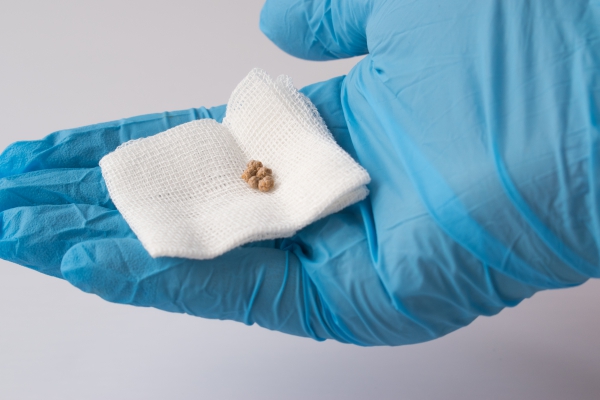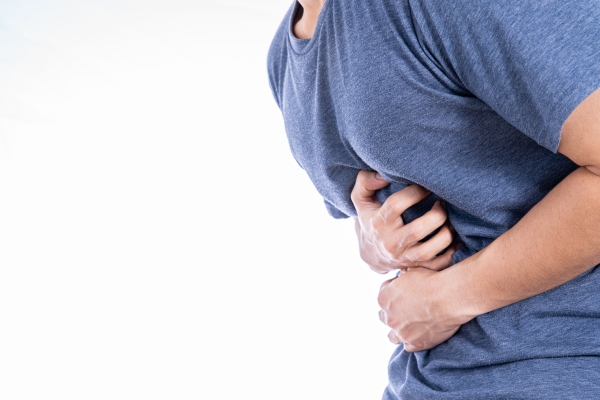What are gallstones?
Gallstones are hard deposits or stones that develop inside your gallbladder. The gallbladder is a small organ which is located on the right side of the upper abdomen, just beneath the liver. Its function is to concentrate bile. Bile is a green-yellow liquid that is produced by the liver for digestion of fats.
In the United States, around 20 million people have gallstones. There are mainly 3 types of gallstones and these are cholesterol, brown and black gallstones. These may be very small or as large as a golf ball. Some people may have only 1 gallstone or several at the same time. The treatment involves removal of the gallbladder.
What are the causes of gallstones?
Bile usually contains an amount of cholesterol that is small enough for the chemicals in bile to dissolve them. However, if your liver excretes too much cholesterol, these may precipitate to form crystals and eventually stones.
Excess bilirubin in bile may also result in the formation of gallstones. Bilirubin is a substance obtained from the breakdown of red blood cells. Liver cirrhosis, biliary tract infections and certain blood disorders can increase bilirubin production by your liver.
In addition, if your gallbladder does not empty properly, the bile may become too concentrated which can result in gallstone formation.

Cholesterol gallstones are the most common type of gallstones which are yellow in colour. Pigmented gallstones may be brown or black that usually form due to excess bilirubin in bile.
What are the risk factors for gallstones?
There are several factors which may increase your risk of developing gallstones, these include:
- Being above the age of 40 years.
- Being female.
- Eating high fat and cholesterol diet.
- Eating low fibre diet.
- Being obese or overweight.
- Having a sedentary lifestyle.
- Being pregnant.
- Having a family history of gallstones.
- Being diabetic.
- Taking oral contraceptive pills or hormonal replacement therapy.
- Having liver disease.
- Losing weight too quickly.
What are the signs and symptoms of gallstones?
Gallstones may cause no symptoms in some people. However, if the stone causes blockage of the bile duct, the following signs and symptoms may be present:
- Pain that is located at the centre or on the upper right side of the abdomen.
- The pain usually radiates to the right shoulder.
- The pain occurs after eating a fatty meal.
- The pain usually increases steadily over about 10-20 minutes then decreases progressively, lasting for 1-5 hours.
- The pain is constant and is not relieved by neither antacids nor with positional changes.
- Sweating during acute pain.
- Nausea and vomiting.


Making a diagnosis
Your doctor will first take a detailed history from you to know more about your symptoms. This is usually followed by a physical examination where your doctor will look for signs of gallstone- you will feel an intense pain when your doctor will palpate the gallbladder. In addition, your doctor may order some tests to confirm the diagnosis, these include:
- Abdominal ultrasound: this is the most commonly used test in the evaluation of gallstones. Your doctor will look at the thickness of your gallbladder wall, presence of any stone in the gallbladder and the diameter of the common bile duct which is the duct transporting bile from your liver to your intestine.
- Endoscopic ultrasound: this test can detect smaller stones that could have been missed by abdominal ultrasound. The procedure involves your doctor passing a tube containing the ultrasound device into your mouth to reach your intestines.
- Hepatobiliary iminodiacetic acid (HIDA) scan: this test shows how well your gallbladder is functioning by assessing how bile is being removed from it.
- Computed tomography (CT) scan
- Magnetic resonance cholangiopancreatography: this imaging technique provides superior anatomic information about the biliary tract.
- Endoscopic retrograde cholangiopancreatography: this test is both diagnostic and therapeutic and is used when the stone is lodged in the common bile duct.
- Blood tests: the blood tests may reveal any infection, jaundice or pancreatitis.

Treatment of gallstones
The treatment of gallstones involves surgery which is called cholecystectomy. This procedure can be done either by doing an incision on your abdomen (open cholecystectomy) or by using cameras (laparoscopic cholecystectomy). Laparoscopic cholecystectomy is the treatment of choice nowadays as it results in less blood loss and quicker recovery. In addition, it is important to note that removal of the gallbladder will not affect your digestion. Rather than bile being stored into your gallbladder, it will flow directly from your liver to your intestines. Furthermore, if your doctor suspects gallbladder cancer, then open surgery is preferred.
Asymptomatic gallstone usually can be left untreated. However, if you have liver disease, diabetes or gallbladder cancer, elective cholecystectomy can then be done to prevent complications.
What are the complications of gallstones?
Leaving symptomatic gallstones untreated, can lead to serious complications such as:
- Gallbladder cancer: people with recurrent gallstone are at increased risk of developing gallbladder cancer.
- Inflammation of the gallbladder: if your gallbladder is inflamed, it can lead to severe abdominal pain and fever.
- Obstruction of the common bile duct: If the stone is lodged in your common bile duct, then bile can no longer reach your intestines. This can lead to severe pain, fever, jaundice, pale stools and dark urine. This can also lead to infection of the biliary tract which will have the same symptoms as mentioned above in addition to altered mental status and hypotension.
- Pancreatitis: if the stone lodges in your pancreatic duct, which is the duct that connects your common bile duct to your intestines, it can cause inflammation of your pancreas (pancreatitis). Pancreatitis results in extremely severe abdominal pain and requires hospitalisation.

Prevention of gallstones
There are several ways in which you can decrease your risk of getting gallstones, these include:
- Eating food high in fibre.
- Maintaining a healthy lifestyle by doing regular physical exercises and monitoring your weight.
- Avoiding skipping meals.
- Avoiding losing weight too quickly.
Prognosis
Less than half of people with gallstones have symptoms which will required surgical treatment. The mortality rate following surgery is less than 0.5%.

Source:
Parveen, K. and Michael, C., 2017. Kumar & Clark’s Clinical Medicine. 9th ed. The Netherlands: ELSEVIER.
Heuman, D., 2020. Gallstones (Cholelithiasis).
Zakko, S., 2020. Overview of gallstone disease in adults.


